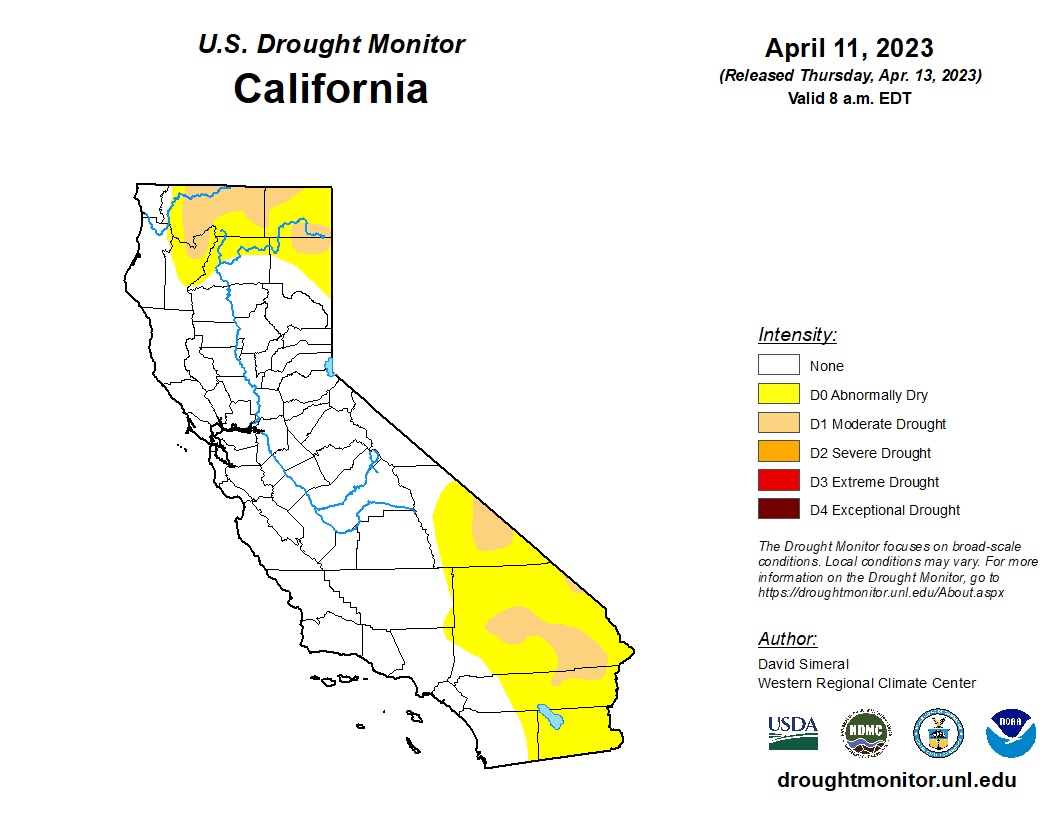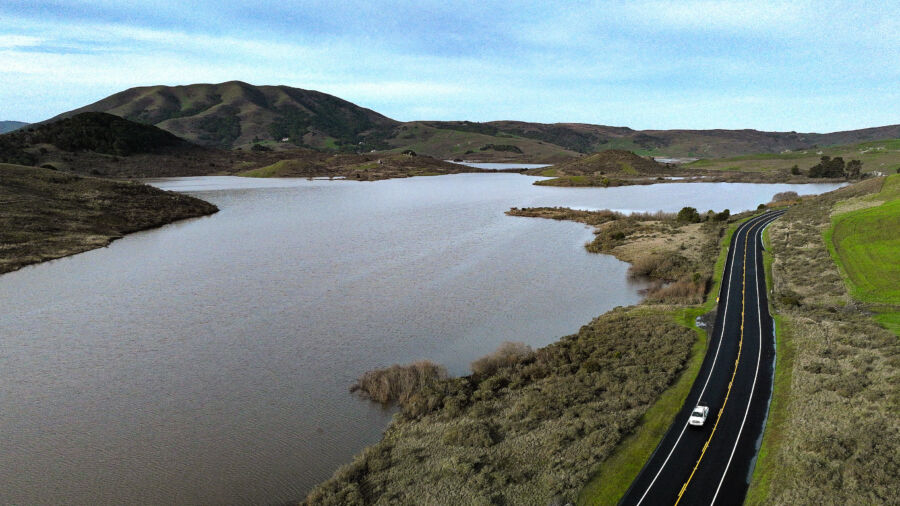California has been grappling with one of the longest droughts in its history for nearly three years, and the state is finally seeing a ray of hope.
The recent winter storms that hit the Golden State from December until March have resulted in almost complete eradication of drought conditions, according to the latest data from the U.S. Drought Monitor. The April 11 update, published on April 13, comes as the state has been under strict drought regulations for years.
According to the drought monitor’s findings, the state is more than 91 percent drought-free, with data suggesting vast swathes of the state, including most of Central California—Central Valley, Central Sierra, and the foothills—as well as Southern California, are now in the clear.

“Abnormal dryness,” which is not counted as drought conditions, is still affecting approximately 34 percent of California, but this marks a significant improvement from the previous week’s numbers of 43.8 percent.
Roughly 8.8 percent of the state is now considered to be experiencing “moderate” drought conditions, including parts of San Bernardino, Riverside, and Inyo counties in Southern California, as well as parts of a few Northern California counties such as Modoc, Lassen, Trinity, and Siskiyou.
According to the most recent data on the state’s largest reservoir levels, 15 of the 17 reservoirs are either at least half full or completely full.
Compared to some other parts of the country, California is faring well.
More than 56 percent of Kansas is experiencing “extreme drought” or “exceptional drought.” Additionally, 39 percent of Oklahoma is facing “extreme” or “exceptional drought.”
Parts of Oregon, Wyoming, Nebraska, Colorado, New Mexico, Texas, and Florida are also currently facing “extreme drought” conditions.
California’s snowpack is also above its normal levels, with the latest data from the state’s Department of Water Resources as of April 14 showing the Northern Sierra 208 percent of normal, the Central Sierra 241 percent, and the Southern Sierra 314 percent.
This snowpack is critical to the state’s water supply, as it provides a significant portion of the water used for drinking, agriculture, and other essential purposes. When the snowpack is full, it means that there is an ample amount of water stored in the snow to melt and flow into the state’s reservoirs over the coming months.
However, since the snowpack is two to three times its normal amount, communities across the state are bracing for possible flooding once the snow melts as the weather heats up.
Meanwhile, most of the state’s wells being monitored for groundwater reserves are still below normal levels. Groundwater makes up 40 percent of the state’s annual water supply in normal years and nearly 60 percent in drought years, according to the Department of Water Resources.
From The Epoch Times

